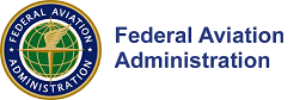The Federal Aviation Administration (FAA) has made changes to the conditions and limitations imposed on commercial operators of unmanned aircraft systems (UAS) that should ease regulatory burdens and provide clarity for companies using UAS for commercial purposes.
The FAA currently authorizes UAS operators for commercial purposes under its Section 333 process. The FAA’s most recent grants of Section 333 petitions and amendments indicate a policy shift with respect to which aircraft may be used under a Section 333 grant, operations over people, and lost link events. Commercial UAS operators that received grants prior to these policy changes or those with currently pending petitions may wish to submit a request for amendment to reflect the revised conditions and limitations.
Which Aircraft May Be Used. The FAA previously authorized Section 333 grantees to use only the aircraft identified in the petitioner’s application. If these entities later wanted to use additional aircraft, they were required to file an amendment to the Section 333 petition and wait for FAA grant. In contrast, the FAA’s most recent Section 333 grants include the following language:
The operator is authorized by this grant of exemption to use any aircraft identified on the List of Approved UAS under Section 333 at regulatory docket FAA-2007-3330 at www.regulations.gov, when weighing less than 55 pounds including payload. Proposed operations of any aircraft not on the list currently posted to the above docket will require a new petition or a petition to amend this exemption.
The List of Approved UAS contains 1120 models of UAS that have been previously approved by the Secretary of Transportation under Section 333 of the 2012 FAA Modernization and Reform Act as of March 4, 2016.
Operations Near People. The FAA also altered its previously standard grant language regarding operations near people. First, the FAA retains the requirement for when operations may occur within 500 feet of certain participating persons. The FAA previously permitted such operations with respect to the Pilot in Command (PIC), Visual Observer (VO), and “operator trainees or essential persons,” but now clarifies that these operations are permitted only with respect to “the PIC, VO, and other consenting personnel that are directly participating in the safe operation of the UA” (emphasis added).
Second, the FAA has added a new condition that permits flights near but not over persons directly participating in the “intended purpose of the UAS operation.” This provision appears to apply to individuals that are not involved in operating the UAS but are involved in the operations the UAS is undertaking. Presumably, this would include such persons as athletes competing in a UAS-filmed sporting event, news teams using UAS for newsgathering, and personnel collecting and using aerial data for purposes such as facilities inspection, aerial surveying, and insurance underwriting. Under the new conditions, such persons must be properly briefed and must give consent. Further, the operator must have an operations manual addressing certain items and submit a written Plan of Activities to the local Flight Standards District Office at least 72 hours prior to operations. Before the policy shift, the latter two requirements were imposed only on closed-set filmmaking operations.
Third, the new terms retain the requirement that operations may not occur within 500 feet of all nonparticipating persons unless barriers or structures protect those persons.
Lost Link Events. Finally, the FAA tweaked its standard grant language regarding lost link events. The FAA’s previous requirement stated “[i]f the UAS loses communications or loses its GPS signal, the UA must return to a pre-determined location within the private or controlled-access property.” The requirement in the most recent terms states that if the pilot loses command or control link, the UAS “must follow a pre-determined route to either reestablish link or immediately recover or land.”
Source: Wiley Rein

